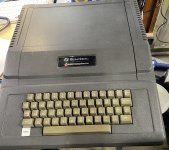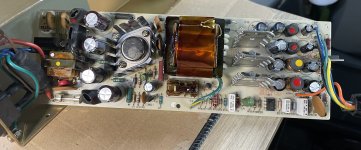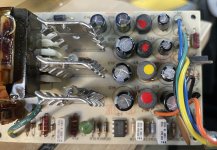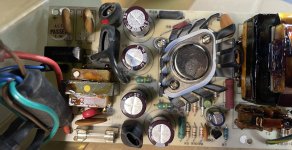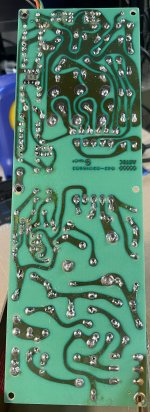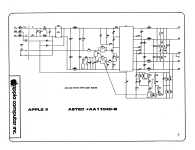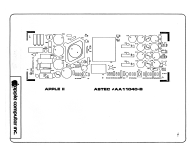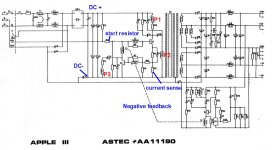ArcadeDanger
New Member
- Joined
- Dec 31, 2023
- Messages
- 5
Hi everyone, I'm trying to get old Darth Vader Apple II running again and its power supply is giving me a hard time. No visible signs of life on power up. Took the power supply out, it is an Astec AA11040B. No voltages at any of the pins (+5,-5, +12 or -12) all dead on multimeter. Testing this with a multimeter between the ground and each wire in the connector.
Tried:
-Fuse tested ok.
-Went through and did a cap kit and replaced the cracked RIFA (kit sourced from console5). No change. Note the capacitors I pulled were testing ok in the ESR with a few out of spec.
-Desoldered 1 leg and lifted to test all the diodes, tested all ok.
-Transistors Q1, Q3 were removed and tested outside of circuit, seem ok.
-Went through board looking for cold joints, nothing obvious but touched up anything remotely suspect.
-IC1 (TL431CP) was replaced, original is ok - behaved same as replacement with diode tests, looks like a transistor but it's not, which is why it didn't test proper initially.
-T3 transformer was removed and continuity tested according to another post based on this thread: https://forum.vcfed.org/index.php?t...ply-aa11040b-ticking-problem-when-cold.57242/.
-Diodes D11, D5, D4 were removed and replaced with 1N4148s that I had in my stock (the old ones tested ok, so this was a shotgun replacement that wasn't needed but it was on this thread: https://tinkerdifferent.com/threads/apple-ii-astec-power-supply-aa11040b-low-voltage-repair.2876/).
I read that sometimes there needs to be load to make the voltage show, so I did try putting some load on the +5 and +12 connectors (89ohm resistor for both) but that had no effect.
I need some help to figure out what else to do diagnostically to get the supply working again rather than me stumbling around replacing components. I have access to an old slightly out of focus oscilloscope if that would help, but I need guidance on what to do with it.
Thanks!
Tried:
-Fuse tested ok.
-Went through and did a cap kit and replaced the cracked RIFA (kit sourced from console5). No change. Note the capacitors I pulled were testing ok in the ESR with a few out of spec.
-Desoldered 1 leg and lifted to test all the diodes, tested all ok.
-Transistors Q1, Q3 were removed and tested outside of circuit, seem ok.
-Went through board looking for cold joints, nothing obvious but touched up anything remotely suspect.
-IC1 (TL431CP) was replaced, original is ok - behaved same as replacement with diode tests, looks like a transistor but it's not, which is why it didn't test proper initially.
-T3 transformer was removed and continuity tested according to another post based on this thread: https://forum.vcfed.org/index.php?t...ply-aa11040b-ticking-problem-when-cold.57242/.
-Diodes D11, D5, D4 were removed and replaced with 1N4148s that I had in my stock (the old ones tested ok, so this was a shotgun replacement that wasn't needed but it was on this thread: https://tinkerdifferent.com/threads/apple-ii-astec-power-supply-aa11040b-low-voltage-repair.2876/).
I read that sometimes there needs to be load to make the voltage show, so I did try putting some load on the +5 and +12 connectors (89ohm resistor for both) but that had no effect.
I need some help to figure out what else to do diagnostically to get the supply working again rather than me stumbling around replacing components. I have access to an old slightly out of focus oscilloscope if that would help, but I need guidance on what to do with it.
Thanks!

